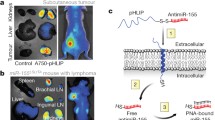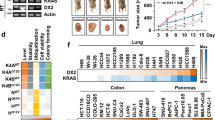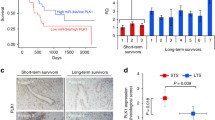Abstract
Pancreatic cancer is highly dependent on the activity of the KRAS oncogene, which controls the redox homeostasis and induces metabolic reprogramming. Since KRAS is critical for the growth of ~30% of human tumors, targeting this oncogene is a high priority in cancer therapy. Despite its proven importance in cancer, the numerous efforts over the last three decades to develop inhibitors for protein KRAS or for downstream signaling pathways have not reached the clinic. For this reason, the KRAS oncogene has been for a long time considered undruggable. Two sequence elements of KRAS, located in the promoter and 5′-untranslated region (UTR), have high guanine content that allows folding into G-quadruplex (G4) structures. The G4 motif near the transcription initiation site called 32R acts as a hub for transcription factors, making it an attractive target for small molecules capable of competing DNA-protein interactions. In addition, the 5′-UTR of mRNA folds into a complex tertiary structure in which three nonoverlapping G4 motifs near the 5′-cap form RNA G-quadruplexes that are recognized by cationic porphyrins: photosensitizers that, when irradiated, can generate the strong oxidant singlet oxygen 1O2, which degrades mRNA and inhibits translation. In addition, other KRAS targeting mechanisms based on the use of decoy oligonucleotides mimicking the critical promoter G4 structure and miRNA 216b targeting the 3′-UTR sequence are discussed.
Similar content being viewed by others
References
Alemasova EE, Lavrik OI (2019) Poly(ADP-ribosyl)ation by PARP1: reaction mechanism and regulatory proteins. Nucleic Acids Res 47:3811–3827
Awasthi N, Monahan S, Stefaniak A et al (2017) Inhibition of the MEK/ERK pathway augments nab-paclitaxel-based chemotherapy effects in preclinical models of pancreatic cancer. Oncotarget 9:5274–5286
Belotserkovskii BP, Liu R, Tornaletti S et al (2010) Mechanisms and implications of transcription blockage by guanine-rich DNA sequences. Proc Natl Acad Sci 107:12816–12821
Belotserkovskii BP, Soo Shin JH, Hanawalt PC (2017) Strong transcription blockage mediated by R-loop formation within a G-rich homopurine-homopyrimidine sequence localized in the vicinity of the promoter. Nucleic Acids Res 45:6589–6599
Brito H, Martins AC, Lavrado J et al (2015) Targeting KRAS oncogene in colon cancer cells with 7-carboxylate Indolo[3,2-b]quinoline tri-alkylamine derivatives. PLoS One 10:e0126891
Brummelkamp TR, Bernards R, Agami R (2002) Stable suppression of tumorigenicity by virus-mediated RNA interference. Cancer Cell 2:243–247
Calabrese DR, Zlotkowski K, Alden S et al (2018) Characterization of clinically used oral antiseptics as quadruplex-binding ligands. Nucleic Acids Res 46:2722–2732
Chen K, Zhang Y, Qian L et al (2021) Emerging strategies to target RAS signaling in human cancer therapy. J Hematol Oncol 14:116
Cinque G, Ferino A, Pedersen EB et al (2020) Role of poly [ADP-ribose] polymerase 1 in activating the Kirsten ras (KRAS) gene in response to oxidative stress. Int J Mol Sci 21:6237–6259
Cogoi S, Xodo LE (2006) G-quadruplex formation within the promoter of the KRAS proto-oncogene and its effect on transcription. Nucleic Acids Res 34:2536–2549
Cogoi S, Xodo LE (2016) G4 DNA in ras genes and its potential in cancer therapy. Biochim Biophys Acta 1859:663–674
Cogoi S, Paramasivam M, Spolaore B et al (2008) Structural polymorphism within a regulatory element of the human KRAS promoter: formation of G4-DNA recognized by nuclear proteins. Nucleic Acids Res 36:3765–3780
Cogoi S, Zorzet S, Rapozzi V et al (2013) MAZ-binding G4-decoy with locked nucleic acid and twisted intercalating nucleic acid modifications suppresses KRAS in pancreatic cancer cells and delays tumor growth in mice. Nucleic Acids Res 41:4049–4064
Cogoi S, Shchekotikhin AE, Xodo LE (2014) HRAS is silenced by two neighboring G-quadruplexes and activated by MAZ, a zinc-finger transcription factor with DNA unfolding property. Nucleic Acids Res 42:8379–8388
Cogoi S, Ferino A, Miglietta G et al (2018) The regulatory G4 motif of the Kirsten ras (KRAS) gene is sensitive to guanine oxidation: implications on transcription. Nucleic Acids Res 46:661–676
Collins MA, Bednar F, Zhang Y et al (2012) Oncogenic KRAS is required for both the initiation and maintenance of pancreatic cancer in mice. J Clin Invest 122:639–653
Conrad M, Friedmann Angeli JP (2015) Glutathione peroxidase 4 (Gpx4) and ferroptosis: what’s so special about it? Mol Cell Oncol 2:e995047
Conrad M, Pratt DA (2019) The chemical basis of ferroptosis. Nat Chem Biol 15:1137–1147
Conroy T, Hammel P, Hebbar M et al (2018) FOLFIRINOX or gemcitabine as adjuvant therapy for pancreatic cancer. N Engl J Med 379:2395–2406
Cox AD, Der CJ, Philips MR (2015) Targeting RAS membrane association: back to the future for anti-RAS drug discovery? Clin Cancer Res 21:1819–1827
Davis S, Lollo B, Freier S, Esau C (2006) Improved targeting of miRNA with antisense oligonucleotides. Nucleic Acids Res 34:2294–2304
Davis S, Propp S, Freier SM et al (2009) Potent inhibition of microRNA in vivo without degradation. Nucleic Acids Res 37:70–77
Di Giorgio E, Ferino A, Choudhary H et al (2022) Photosensitization of pancreatic cancer cells by cationic alkyl-porphyrins in free form or engrafted into POPC liposomes: the relationship between delivery mode and mechanism of cell death. J Phochem Photobiol B 231:112449
Di Magliano MP, Logsdon CD (2013) Roles for KRAS in pancreatic tumor development and progression. Gastroenterology 144:1220–1229
Dixon SJ, Lemberg KM, Lamprecht MR et al (2012) Ferroptosis: an iron-dependent form of nonapoptotic cell death. Cell 149:1060–1072
Dunnett-Kane V, Burkitt-Wright E, Blackhall F et al (2020) Germline and sporadic cancers driven by the RAS pathway: parallels and contrasts. Ann Oncol 31:873–883
Eddy J, Vallur AC, Varma S et al (2011) G4 motifs correlate with promoter-proximal transcriptional pausing in human genes. Nucl Acids Res 39:4975–4983
Edwards AD, Marecki JC, Byrd AK et al (2021) G-Quadruplex loops regulate PARP-1 enzymatic activation. Nucleic Acids Res 49:416–431
Eser S, Reiff N, Messer M et al (2013) Selective requirement of PI3K/PDK1 signaling for Kras oncogene-driven pancreatic cell plasticity and cancer. Cancer Cell 23:406–420
Eser S, Schnieke A, Schneider G et al (2014) Oncogenic KRAS signalling in pancreatic cancer. Br J Cancer 111:817–822
Eustermann S, Videler H, Yang JC et al (2011) The DNA-binding domain of human PARP-1 interacts with DNA single-strand breaks as a monomer through its second zinc finger. J Mol Biol 407:149–170
Fan Z, Fan K, Yang C et al (2018) Critical role of KRAS mutation in pancreatic ductal adenocarcinoma. Transl Cancer Res 7:1728–1736
Ferino A, Miglietta G, Picco R et al (2018) MicroRNA therapeutics: design of single-stranded miR-216b mimics to target KRAS in pancreatic cancer cells. RNA Biol 15:1273–1285
Ferino A, Nicoletto G, D’Este F et al (2020) Photodynamic therapy for ras-driven cancers: targeting G-Quadruplex RNA structures with bifunctional alkyl-modified porphyrins. J Med Chem 63:1245–1260
Ferino A, Marquevielle J, Choudhary H et al (2021) hnRNPA1/UP1 unfolds KRAS G-quadruplexes and feeds a regulatory axis controlling gene expression. ACS Omega 6:34092–34106
Gupte R, Liu Z, Kraus WL (2017) Parp and ADP-ribosylation: recent advances linking molecular functions to biological outcomes. Genes Dev 31:101–126
Huppert JL, Balasubramanian S (2007) G-quadruplexes in promoters throughout the human genome. Nucl Acids Res 35:406–413
Kanda M, Matthaei H, Wu J et al (2012) Presence of somatic mutations in most early-stage pancreatic intraepithelial neoplasia. Gastroenterology 142:730–733
Kerkour A, Marquevielle J, Ivashchenko S et al (2017) High-resolution three-dimensional NMR structure of the KRAS proto-oncogene promoter reveals key features of a G-quadruplex involved in transcriptional regulation. J Biol Chem 292:8082–8091
Lago S, Nadai M, Cernilogar FM et al (2021) Promoter G-quadruplexes and transcription factors cooperate to shape the cell type-specific transcriptome. Nat Commun 12:3885
Lavrado J, Borralho PM, Ohnmacht SA et al (2013) Synthesis, G-quadruplex stabilisation, docking studies, and effect on cancer cells of indolo[3,2-b]quinolones with one, two, or three basic side chains. Chem Med Chem 8:1648–1661
Lavrado J, Ohnmacht SA, Correia I et al (2015a) Indolo[3,2-c]quinoline G-quadruplex stabilizers: a structural analysis of binding to the human telomeric G-quadruplex. ChemMedChem 10:836–849
Lavrado J, Brito H, Borralho PM et al (2015b) KRAS oncogene repression in colon cancer cell lines by G-quadruplex binding indolo[3,2-c]quinolines. Sci Rep 5:9696
Lee RC, Feinbaum RL, Ambros V (1993) The C. elegans heterochronic gene lin-4 encodes small RNAs with antisense complementarity to lin-14. Cell 75:843–854
Lima JF, Cerqueira L, Figueiredo C (2018) Anti-miRNA oligonucleotides: a comprehensive guide for design. RNA Biol 15:338–352
Lindsay CR, Blackhall FH (2019) Direct Ras G12C inhibitors: crossing the rubicon. Br J Cancer 121:197–198
Marchetti C, Zyner KG, Ohnmacht SA et al (2018) Targeting multiple effector pathways in pancreatic ductal adenocarcinoma with a G-quadruplex-binding small molecule. J Med Chem 61:2500–2517
Marquevielle J, Robert C, Lagrabette O et al (2020) Structure of two G-quadruplexes in equilibrium in the KRAS promoter. Nucleic Acids Res 48:9336–9345
Miglietta G, Gouda AS, Cogoi S et al (2015) Nucleic acid targeted therapy: G4 oligonucleotides downregulate HRAS in bladder cancer cells through a decoy mechanism. ACS Med Chem Lett 6:179–183
Miglietta G, Cogoi S, Marinello J et al (2017) RNA G-Quadruplexes in Kirsten Ras (KRAS) oncogene as targets for small molecules inhibiting translation. J Med Chem 60:9448–9461
Nayun K (2019) The interplay between G-quadruplex and transcription. Curr Med Chem 26:2898–2917
O’Brien J, Hayder H, Zayed Y et al (2018) Overview of microRNA biogenesis, mechanisms of actions, and circulation. Front Endocrinol (Lausanne) 9:402
Ostrem JM, Peters U, Sos ML et al (2013) K-Ras(G12C) inhibitors allosterically control GTP affinity and effector interactions. Nature 503:548–551
Ou A, Schmidberger JW, Wilson KA et al (2020) High resolution crystal structure of a KRAS promoter G-quadruplex reveals a dimer with extensive poly-A pi-stacking interactions for small-molecule recognition. Nucleic Acids Res 48:5766–5776
Paramasivam M, Membrino A, Cogoi S et al (2009) Protein hnRNP A1 and its derivative Up1 unfold quadruplex DNA in the human KRAS promoter: implications for transcription. Nucleic Acids Res 37:2841–2853
Paramasivam M, Cogoi S, Xodo LE (2011) Primer extension reactions as a tool to uncover folding motifs within complex G-rich sequences: analysis of the human KRAS NHE. Chem Commun (Camb) 47:4965–4967
Petersen M, Wengel J (2003) LNA: a versatile tool for therapeutics and genomics. Trends Biotechnol 21:74–81
Rahib L, Wehner MR, Matrisian LM et al (2021) Estimated projection of US cancer incidence and death to 2040. JAMA Netw Open 4:e214708
Rapozzi V, Zorzet S, Zacchigna M et al (2014) Anticancer activity of cationic porphyrins in melanoma tumor-bearing mice and mechanistic in vitro studies. Mol Cancer 13:75
Rawla P, Sunkara T, Gaduputi V (2019) Epidemiology of pancreatic cancer: global trends, etiology and risk factors. World J Oncol 10:10–27
Sabharwal NC, Mendoza O, Nicoludis JM et al (2016) Investigation of the interactions between Pt(II) and Pd(II) derivatives of 5,10,15,20-tetrakis (N-methyl-4-pyridyl) porphyrin and G-quadruplex DNA. J Biol Inorg Chem 21(227–239):65
Saito I, Takayama M, Sugiyama H et al (1995) Photoinduced DNA cleavage via electron transfer: demonstration that guanine residues located 5’ to guanine are the most electron-donating sites. J Am Chem Soc 117:6406–6407
Santana-Codina N, Roeth AA, Zhang Y et al (2018) Oncogenic KRAS supports pancreatic cancer through regulation of nucleotide synthesis. Nat Commun 9:4945
Sen M, Thomas SM, Kim S et al (2012) First-in-human trial of a STAT3 decoy oligonucleotide in head and neck tumors: implications for cancer therapy. Cancer Discov 2:694–705
Siddiqui-Jain A, Grand CL, Bearss DJ et al (2002) Direct evidence for a G-quadruplex in a promoter region and its targeting with a small molecule to repress c-MYC transcription. Proc Natl Acad Sci 99:11593–11598
Siegel RL, Miller KD, Jemal A (2018) Cancer Stat 68:7–30
Skovsen E, Snyder JW, Lambert JDC et al (2005) Lifetime and diffusion of singlet oxygen in a cell. J Phys Chem B 109:8570–8573
Snead NM, Escamilla-Powers JR, Rossi JJ et al (2013) 5’unlocked nucleic acid modifications improves siRNA targeting. Mol Ther Nucleic Acids 2:e103
Soldatenkov VA, Vetcher AA, Duka T et al (2008) First evidence of a functional interaction between DNA quadruplexes and poly(ADP-ribose) polymerase-1. ACS Chem Biol 3:214–219
Son J, Lyssiotis CA, Ying H et al (2013) Glutamine supports pancreatic cancer growth through a KRAS-regulated metabolic pathway. Nature 496:101–105
Spiegel J, Cuesta SM, Adhikari S et al (2021) G-quadruplexes are transcription factor binding hubs in human chromatin. Genome Biol 22:117
Steenken S, Jovanovic SV (1997) How easily oxidizable is DNA? One-electron reduction potentials of adenosine and guanosine radicals in aqueous solution. J Am Chem Soc 119:617–618
Stenvang J, Kauppinen S (2008) MicroRNAs as targets for antisense-based therapeutics. Expert Opin Biol Ther 8:59–81
Sun SY (2010) N-acetylcysteine, reactive oxygen species and beyond. Cancer Biol Ther 9:109–110
Todd AK, Neidle S (2008) The relationship of potential G-quadruplex sequences in cis -upstream regions of the human genome to SP1-binding elements. Nucleic Acids Res 36:2700–2704
Vallejo A, Perurena N, Guruceaga E et al (2017) An integrative approach unveils FOSL1 as an oncogene vulnerability in KRAS-driven lung and pancreatic cancer. Nat Commun 8(14294)
Von Hoff DD, Ervin T, Arena FP et al (2013) Increased survival in pancreatic cancer with nab-paclitaxel plus gemcitabine. N Engl J Med 369:1691–1703
Waters AM, Der CJ (2018) KRAS: the critical driver and therapeutic target for pancreatic cancer. Cold Spring Harb Perspect Med 8:a031435
Xodo LE, Cogoi S, Rapozzi V (2016) Photosensitizers binding to nucleic acids as anticancer agents. Future Med Chem 8:179–194
Yang WS, SriRamaratnam R, Welsch ME et al (2014) Regulation of ferroptotic cancer cell death by GPX4. Cell 156:317–331
Ying H, Kimmelman AC, Lyssiotis CA et al (2012) Oncogenic Kras maintains pancreatic tumors through regulation of anabolic glucose metabolism. Cell 149:656–760
Zhan G, Zhang Z, Yong T et al (2021) Manganese porphyrin-based metal-organic framework for synergistic sonodynamic therapy and ferroptosis in hypoxic tumors. Theranostics 11:1937–1952
Zheng KW, Xiao S, Liu JQ et al (2013) Co-transcriptional formation of DNA: RNA hybridG-quadruplex and potential function as constitutional cis-element for transcription control. Nucleic Acids Res 41:5533–5541
Author information
Authors and Affiliations
Corresponding author
Editor information
Editors and Affiliations
Section Editor information
Rights and permissions
Copyright information
© 2022 Springer Nature Singapore Pte Ltd.
About this entry
Cite this entry
Choudhary, H., Xodo, L.E. (2022). Targeted Cancer Therapy: KRAS-Specific Treatments for Pancreatic Cancer. In: Sugimoto, N. (eds) Handbook of Chemical Biology of Nucleic Acids. Springer, Singapore. https://doi.org/10.1007/978-981-16-1313-5_69-1
Download citation
DOI: https://doi.org/10.1007/978-981-16-1313-5_69-1
Received:
Accepted:
Published:
Publisher Name: Springer, Singapore
Print ISBN: 978-981-16-1313-5
Online ISBN: 978-981-16-1313-5
eBook Packages: Springer Reference Chemistry and Mat. ScienceReference Module Physical and Materials ScienceReference Module Chemistry, Materials and Physics




